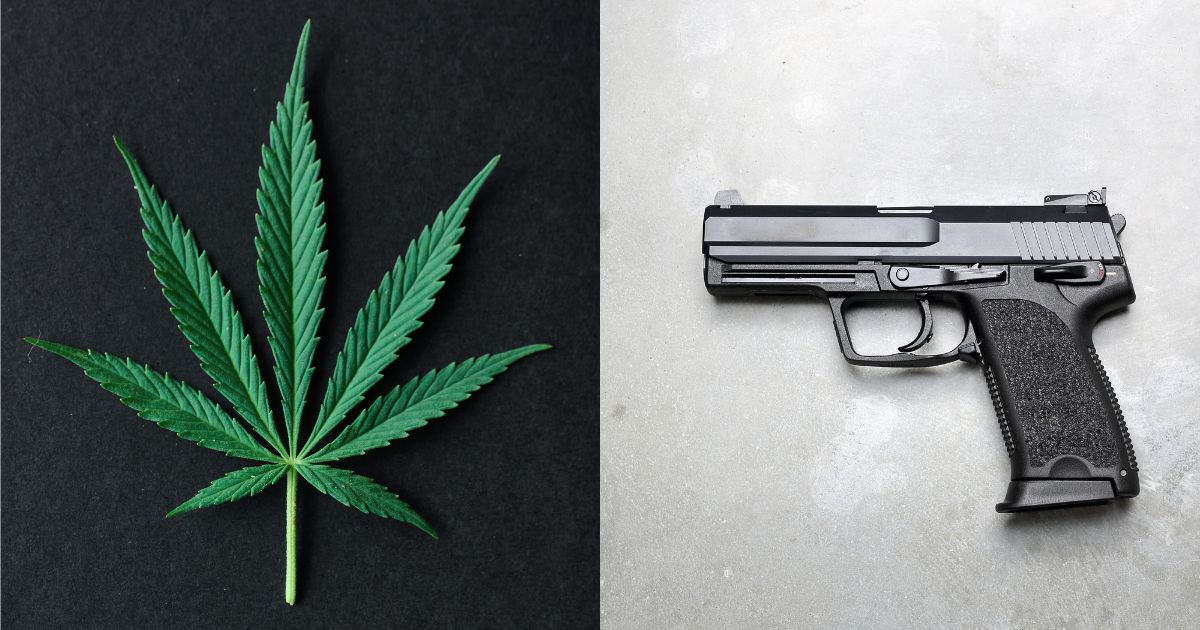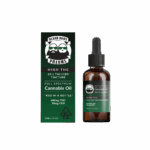A federal judge in Pennsylvania has dismissed a lawsuit challenging the federal government’s ban on gun ownership by medical marijuana patients, highlighting the ongoing debate around cannabis gun users and the complex legal landscape created by conflicting state and federal cannabis laws.
U.S. District Judge Cathy Bissoon recently ruled that the prohibition is constitutional, stating that patients can avoid legal issues “by simply choosing an alternative treatment.”, as first reported by Marijuana Moment.
The decision shows the growing tension between state cannabis programs and federal firearms regulations that affects millions of Americans.
Legal Challenge That Failed
The lawsuit was filed by Warren County District Attorney Robert Greene, who holds a medical marijuana card in Pennsylvania, along with the Second Amendment Foundation.
Greene argued that federal law prevented him from exercising his constitutional right to bear arms despite legally using cannabis under state law.
The case centered on federal statute Section 922(g)(3), which prohibits anyone who is an “unlawful user” of illegal drugs from buying or possessing firearms.
Since cannabis remains federally illegal as a Schedule I substance, medical marijuana patients across all legal states fall under this restriction.
Judge Bissoon dismissed the challenge, (document provided by Marijuana Moment) arguing that the federal law is similar to historical regulations that prevented potentially dangerous individuals—including those who are intoxicated or mentally ill—from possessing firearms. She noted that the restriction is temporary and ends when someone stops using cannabis.
A Patchwork of Conflicting Laws
This ruling perfectly illustrates the confusing legal maze created by federal cannabis prohibition while states continue expanding access. Currently, 38 states plus Washington D.C. have legalized medical marijuana, with 24 states allowing recreational use. Yet federal law treats all cannabis use as criminal.
The contradiction creates impossible choices for patients. In Pennsylvania alone, over 400,000 people are registered medical marijuana patients. Under federal law, every single one of them is prohibited from owning firearms—even though they’re following state law and doctor recommendations.
Double Standard?
Perhaps the most glaring inconsistency in current policy is how alcohol—a substance with well-documented links to violence and impaired judgment—doesn’t disqualify someone from gun ownership.
Alcohol is involved in roughly 40% of violent crimes and significantly impairs motor skills and decision-making. Yet someone can legally purchase firearms while regularly consuming alcohol.
Cannabis, by contrast, has no established causal link to violence. Studies consistently show that cannabis users are less likely to commit violent crimes than alcohol users.
The plant’s effects typically include relaxation and reduced aggression—hardly the profile of someone who poses a firearms danger.
This double standard reveals the arbitrary nature of current policy. If public safety were truly the concern, logic would suggest that alcohol use should trigger similar restrictions.
Instead, federal law creates a blanket prohibition against cannabis users while ignoring substances with proven dangerous effects.
Constitutional Rights in Conflict
The Pennsylvania case highlights a fundamental constitutional tension. The Second Amendment protects the right to bear arms, while the Tenth Amendment reserves powers not enumerated in the Constitution to states.
When states legalize medical marijuana within their borders, they’re exercising traditional police powers over health and safety.
Federal courts have been split on this issue. Some have ruled that blanket bans on gun ownership for cannabis users violate the Second Amendment, especially when applied to occasional users or those following state medical programs.
Others, like Judge Bissoon, have upheld the restrictions based on historical precedent.
The Supreme Court may soon need to resolve this conflict. Several cases are working through the appeals process, and the inconsistent rulings from different circuits make high court review likely.
Real-World Impact on Cannabis Users and Gun Owners
These legal conflicts have serious real-world consequences. Medical marijuana patients often suffer from conditions like chronic pain, PTSD, epilepsy, or cancer.
Many are elderly or disabled individuals who may need firearms for home protection but must choose between legal medical treatment and constitutional rights.
Veterans represent a particularly affected population. Many use medical marijuana to treat service-related PTSD and chronic pain, conditions that the Department of Veterans Affairs increasingly recognizes as legitimate medical needs.
Yet these same veterans—who served their country and earned Second Amendment rights—must surrender those rights to access legal medical treatment.
The arbitrary nature of enforcement adds another layer of concern. While federal authorities rarely prosecute medical marijuana patients for firearms violations, the threat remains.
Patients live in legal limbo, unsure if their state-legal behavior could result in federal prosecution.
Moving Toward Rational Policy
The Pennsylvania ruling demonstrates why comprehensive federal cannabis reform is necessary. Piecemeal state legalization creates an untenable situation where law-abiding citizens must choose between constitutional rights and legal medical treatment.
Several solutions could address this conflict:
Federal Legalization: Complete federal legalization would eliminate the underlying conflict between state and federal law.
Rescheduling Cannabis: Moving cannabis from Schedule I to a lower schedule would acknowledge its medical value and reduce conflicts with other federal laws.
Firearms Law Reform: Congress could modify Section 922(g)(3) to exclude state-legal medical marijuana use, similar to how prescription medications are treated.
Safe Harbor Provisions: Federal law could provide explicit protections for individuals following state cannabis programs.
Path Forward For Medical Cannabis Users and Gun Owners
The Pennsylvania decision, while disappointing for cannabis advocates, reflects current legal reality under federal prohibition. Judge Bissoon agues the she is correctly apply existing law, even if that law creates illogical results.
The real issue isn’t judicial interpretation—it’s the underlying policy framework that treats cannabis as more dangerous than alcohol while ignoring scientific evidence about relative risks.
Until federal law catches up with public opinion, medical evidence, and state-level reforms, patients will continue facing these impossible choices.
Cannabis users shouldn’t be forced to surrender constitutional rights to access legal medical treatment. The contrast with alcohol policy reveals the arbitrary nature of current restrictions.
A plant that helps millions manage pain, seizures, and other serious conditions shouldn’t disqualify someone from exercising Second Amendment rights—especially when more dangerous substances don’t trigger similar restrictions.
As more states legalize cannabis and federal attitudes continue evolving, pressure will mount for comprehensive reform. The Pennsylvania case is just one example of why the current system is unsustainable.
Common-sense policy would recognize that state-legal cannabis use doesn’t make someone a danger to society—and shouldn’t cost them their constitutional rights.




















